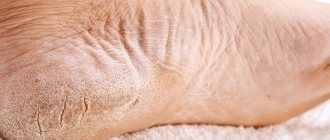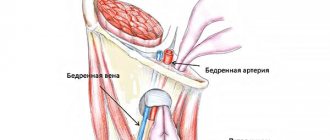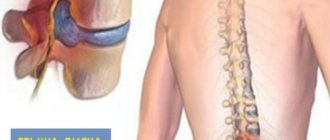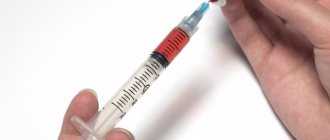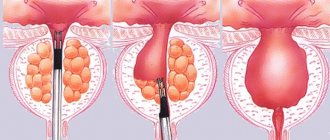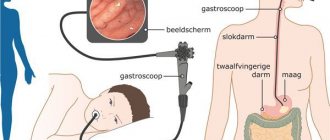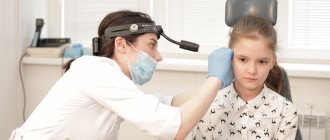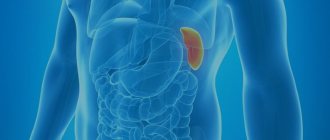Pain in the right side in the groin indicates impaired functioning of the internal organs. Unpleasant sensations that disturb the patient can be caused by many reasons. Pain in the right groin progresses with injuries. We are talking about sprains, cracks and bruises. Athletes whose muscles are often damaged by excessive stress are prone to this symptom. People who work physically also suffer from pain in the right groin.
You should not delay visiting a doctor, as damaged organs can negatively affect the functioning of other body systems. At the KDS Clinic, specialists will conduct a high-quality examination, diagnose diseases even in the early stages and prescribe effective treatment. You will forget about the pain in your right groin when walking.
The nature of the pain varies. The patient feels a sharp pulling, sharp dagger or dull aching sensation. It is necessary to inform the specialist about the nature, frequency and duration of pain.
Why do men experience groin pain?
Inguinal hernia
Inguinal hernias are the most common type of hernial protrusion, occurring 6 times more often in men than in women.
The disease develops acutely or gradually. The patient complains of the presence of a tumor-like formation, periodic or constant pain in the groin, radiating to the sacrum and lower back. Involvement of the cecum is manifested by constipation, flatulence, bladder - dysuria, pain above the pubis. A strangulated hernia is characterized by a sharp increase in pain at the height of tension and physical effort. The intensity of the symptom is so great that the patient cannot find a place for himself and groans. Painful shock causes pallor, hypotension, and tachycardia. A clinic for intestinal obstruction is possible. Severe pain persists for several hours, then subsides due to the development of necrosis and death of nerve endings.
Some men develop a recurrent inguinal hernia after hernioplasty. The manifestations are the same as with a regular hernia. A protrusion forms in the area of the postoperative scar, causing aching and nagging pain in the projection of the groin. There may be discomfort while walking. As education increases, dyspeptic disorders or dysuria occur.
Inguinal lymphadenopathy
Pain in the groin against the background of enlarged inguinal lymph nodes, as a rule, indicates the presence of an infectious process, most often appearing with STIs:
- Chlamydia.
The acute form most often develops in men. Accompanied by bilateral inguinal lymphadenopathy. Palpation of the nodes is slightly painful. The skin is not changed. Pain in the lower abdomen and mucopurulent discharge from the urethra are noted. - Gonorrhea.
Enlarged lymph nodes are often bilateral. Pain on palpation and slight redness of the skin are detected. Characterized by purulent urethral discharge in the morning and dysuric disorders. - Mycoplasmosis and ureaplasmosis.
With moderate inflammation, the skin of the groin is not changed, with intense inflammation it is hyperemic. Feeling the lymph nodes is painful. Patients complain of mucopurulent discharge, pain, and pain during urination.
A special form of damage to the lymph nodes is inguinal lymphogranulomatosis - a disease caused by chlamydia, observed mainly in warm countries. In Russia it is diagnosed in sailors, travelers, and military personnel. Regional lymphadenitis occurs 2-4 weeks after infection. It manifests itself as pain and enlargement of the lymph nodes, local edema, and hyperemia. The nodes transform into large lumpy tumors, adhere to the surrounding tissues, become immobile, and then melt to form fistulas and ulcers.
In addition, inguinal lymphadenitis is accompanied by balanitis, Fournier’s gangrene, and some other infectious and inflammatory processes. The nodes are enlarged, painful, mobile on palpation. Lymphadenopathy can also be observed in cancer of the external genitalia, but pain in such cases is not always disturbing; it occurs due to compression of nearby nerves.
Groin pain in a man
Andrological diseases
Men complain about the presence of symptoms in the following pathologies of the genital organs:
- Orchitis.
There is pain in the testicle, perineum, and groin area. In the acute form, the pain is intense, the testicle is sharply swollen, weakness, weakness, and general hyperthermia are observed. In patients with chronic orchitis, the sensation is aching or pulling, but the general condition is not disturbed. - Testicular torsion.
The development of the pathology is indicated by the sudden onset of sharp pain in the scrotum, radiating to the groin and perineum. The symptom is so pronounced that it provokes collapse, nausea, and vomiting. - Funiculocele.
Spermatic cord cysts in young men are often asymptomatic; large formations cause discomfort in the groin. In old age, aching pain may occur. - Varicocele.
Pain in the scrotum and groin area occurs at stage 2 of the disease, ranging from mild to sharp, burning or shooting. Initially, a connection with physical activity is noted. At stage 3, the connection is lost and the symptom becomes permanent.
Manifestations of epididymitis, epididymo-orchitis and vesiculitis resemble the clinical picture of orchitis and can also be accompanied by pain in the groin. Soreness is detected in the syndrome of edematous scrotum, provoked by ischemia, trauma, and infectious diseases. With prostatitis, pain in the perineum often radiates to the groin. In men suffering from prostate adenoma, the symptom appears in the later stages, due to complications from the urinary system.
Urinary tract diseases
Acute pain in the groin area is sometimes caused by a low-lying stone. The symptom appears suddenly and is of significant intensity. Pain in the lumbar and groin areas radiates to the external genitalia and bladder, combined with a frequent urge to urinate and blood in the urine. Similar manifestations, but with less severe pain, are observed with sand in the kidneys against the background of its movement through the urinary tract.
The list of other pathologies of the urinary system with pain in the groin, taking into account the level of damage, includes:
- Urethra: urethritis.
- Bladder: cystitis in men, bladder cancer, malakoplakia.
- Ureters: ureteritis, hydroureter.
- Kidneys: adenocarcinoma, hydronephrosis.
Appendicitis
When the inflamed appendix is located low, acute appendicitis manifests itself as paroxysmal pain in the right inguinal and iliac regions. The clinical picture is complemented by nausea, vomiting, diarrhea, and increased body temperature. In men with chronic appendicitis, the pain is dull, aching, constant, or occurs under the influence of provoking factors (diet disorders, physical activity).
Pathologies of the musculoskeletal system
ARS syndrome is diagnosed in men involved in sports and is characterized by pain in the groin, radiating to the muscles of the thigh and lower abdomen on the affected side. Manifestations are associated with physical activity and range from minor to intense. The pain intensifies when you feel the tendons, ligaments, tense the muscles of the anterior abdominal wall, and abduct the hip.
The symptom also occurs against the background of a sprain of the hip joint, caused by a fall, sudden abduction of the hip during sports activities, or an attempt to do the splits. Sometimes irradiation to the groin is a consequence of diseases and injuries of the hip joint and proximal femur, for example, coxarthrosis, arthropathy, or a fracture of the femoral neck.
Inguinal rubrophytosis
The infectious disease is caused by fungi of the genus Trichophyton rubrum. This is a fairly common type of mycosis, which is diagnosed in a third of the population. You can become infected with inguinal rubrophytosis from a carrier through bodily contact, clothing, and household items.
Common reasons for increased growth of fungal colonies are:
- excessive sweating;
- failure to comply with personal hygiene rules;
- regularly wearing tight, tight clothing, including underwear;
- hormonal and endocrine disorders;
- increased environmental humidity;
- uncontrolled use of certain groups of medications;
- obesity.
Inguinal rubrophytosis manifests itself in 2 forms:
- Erythematosquamous. It manifests itself in the formation of red spots on the skin that have an irregular shape with an intermittent border. On the surface of the affected skin, compactions and a blistering rash with liquid inside are noticeable.
- Follicular nodular. It develops when treatment of the erythematosquamous form is untimely. The follicular nodular form is characterized by the spread of infection to healthy areas of the body: buttocks, feet, forearm, hands, legs.
Inguinal rubrophytosis brings unbearable discomfort to the patient, causing severe itching, pain while walking and when in contact with clothing. If there is no therapy, the spots rapidly increase in size, spreading to healthy areas.
In terms of external signs, inguinal rubromycosis is similar to such common dermatological diseases as:
- eczema;
- psoriasis;
- candidiasis;
- erythrasmus.
To differentiate rubrotrophy, the doctor gives a referral for a comprehensive diagnosis, the results of which will help prescribe the correct and most effective treatment.
Diagnostics
At the initial stage, the man is examined by a urologist-andrologist. If the pain in the groin is not associated with diseases of the genitourinary system, the patient is referred to an abdominal surgeon or orthopedic traumatologist. For STIs, consultation with a venereologist is required. To clarify the diagnosis, the following procedures are performed:
- Diaphanoscopy.
Performed during an objective examination, it helps to differentiate hydrocele and scrotal enlargement of other etiologies (with neoplasia, swelling of soft tissues, inflammation of the membranes and epididymis, inguinal hernias). Due to its low information content, it is used as an indicative study for selecting further diagnostic measures. - Ultrasonography
. Taking into account the expected localization of the pathological focus, a man may be prescribed an ultrasound of the prostate (prostatitis, prostate adenoma), ultrasound of the scrotum (orchitis, epididymitis, testicular torsion) or lymph nodes (lymphadenopathy). To identify an inguinal hernia, an ultrasound of the hernial protrusion is performed, to confirm ARS syndrome - sonography of the symphysis pubis, to diagnose ICD - ultrasound of the kidneys and bladder. - X-ray diagnostics
. Informative for hernias and some diseases of the urinary system. Depending on the location of the lesion, survey urography, CT scan of the kidneys, or irrigography are prescribed. For orthopedic pathologies, radiography of the pelvis or hip joint may be indicated. - Lymph node biopsy.
Recommended for lymphadenopathy of unknown origin. Morphological examination of the biopsy allows one to determine the nature of the pathological process. A large number of lymphocytes indicates inflammation. The detection of atypical cells indicates metastasis of a malignant neoplasm. - Lab tests
. A general blood test is performed to confirm inflammation and exclude lymphadenopathy in hemoblastosis. To determine the causative agents of STDs, PCR diagnostics are performed, RIF or ELISA are performed.
Consultation with a urologist
The structure of the anatomical region in representatives of the stronger sex
The reproductive organs of the stronger sex are divided into those located inside and outside.
Organs that are located externally:
- reproductive organ;
- Scrotum.
Inside the reproductive system are:
- Testes and epididymis;
- Vas deferens;
- Prostate.
Purpose of the urinary and reproductive system in males:
- The genitals, which contain receptors, are considered an erogenous zone;
- The penis performs the act of intercourse.
Ejaculants
The paired male glands that are located inside the reproductive system are called testes.
The main task of the testicles is:
- Sperm production;
- Release of testosterone into the blood.
The testicles are oval-shaped, approximately 25 grams per testicle. The testes are located in the middle of the scrotum. The right testicle is higher than the left testicle. The testes are placed in a special shell and separated from each other by a crossbar.
The testicle is attached with the help of the spermatic cord; it consists of the following components:
- The duct through which sperm flows out;
- Nerve connections;
- Blood and lymph vessels;
- Muscles.
The testicular appendage consists of:
- Head;
- Body;
- Tail.
The peritoneal cavity surrounds the testes and creates a serous space that closes off. On the outside, the testes are covered with a tunica albuginea and under it is the testicular parenchyma. They divide the testicle into 2900 pyramidal particles.
In the middle of one of the lobules there are three tubules, which have a tortuous shape and a length of 90 mm. The seminiferous tubules are interconnected. 15 seminiferous tubules arise from here.
Duct for excreting seminal fluid
Near the prostate, the base of the vas deferens expands and a so-called ampulla is formed. It consistently narrows at the bottom and is directed into a narrow channel.
Spermatic cord
These bubbles are located in the middle of the pelvis, behind and to the side of the bottom of the bladder.
The seminal vesicles contain:
- The wide end, which is called the base;
- Body;
- The tapered end that moves into the duct to release seminal fluid.
The walls of the seminal vesicles contain many tortuous chambers containing protein fluid. It is part of the seminal fluid.
Prostate
The prostate gland has the following structure:
- Right and left lobes;
- Isthmus;
- The outer side of the gland is covered with a capsule; septa extend from it into the middle of the gland;
- The gland consists of glandular and smooth muscle tissue.
Bladder
There are two holes in the back wall of the bladder. The ureters enter through them. The continuation of the neck of the bladder is considered the urethra.
The bladder performs the following functions:
- Its capacity is approximately 350 ml;
- It can empty completely;
- The man has the urge to urinate and urine is released;
- With the help of the lower sphincter, a person has the ability to hold urine.
Rectum
The rectum is designed to collect stool. The intestine is approximately 16 cm long. 13 cm refers to the pelvic region and 3 cm in the anus. The wall of the rectum is covered with mucous and muscular membranes.
Functions of the rectum:
- Discharge of feces;
- Fecal masses collect in the rectum, where they are freed from liquid and formed into compressed feces;
- Approximately 4 liters of fluid enter the intestine per day;
- Water, alcohol, glucose and some medications are absorbed in the rectum;
- Serves as a reservoir;
- Gases and feces accumulate in it.
Penis
The penis consists of:
- Base or root;
- Trunk or middle part;
- Heads.
The appearance of the penis is unique for every man. Penis sizes are also individual. In a calm state, the length of the penis is about 5 cm, in the erection stage it is 16 cm.
Scrotum
The scrotum is a muscular organ covered with skin. In its middle are the testicles, epididymis, and the beginnings of the spermatic cord. All these organs are separated from each other by partitions inside and outside by the embryonic suture. The top of the scrotum is covered with hair, and her skin is darker than normal skin color.
The scrotum contains many sebaceous and sweat glands, which emit a specific odor. The temperature in the scrotum is 2 degrees lower , which creates optimal conditions for sperm production. If it's cold outside, the testicles are pressed closer to the body; in warm conditions, they drop back into the scrotum. The scrotum is also an erogenous zone in men. If you experience itching in the scrotum, read here.
Urine channel
The channel for the emission of urine is a thin tube that has increased elasticity. In representatives of the stronger sex, the size of the canal is about 22 cm. The urethra starts from the bladder and comes out at the head of the penis.
Treatment
Pre-hospital assistance
The appearance of sharp pain in the groin indicates the possible presence of dangerous pathologies: the passage of stones due to urolithiasis, strangulated hernia or acute appendicitis. In these cases, an immediate call to an ambulance is required. Self-administration of painkillers is not recommended, as it can distort the symptoms and complicate the diagnosis. Before the doctor arrives, the man needs to be kept at rest by being placed in a comfortable position.
Conservative therapy
Therapeutic tactics are determined by the cause of pain in the groin. The following treatment methods can be used:
- Painkillers
. To reduce the severity of pain, analgesics and NSAIDs are used in short courses. Medicines are taken only as prescribed by a doctor. - Antibacterial therapy
. Men with nonspecific inflammatory processes are initially prescribed a broad-spectrum antibiotic. Then the drug is replaced taking into account antibiotic sensitivity. For mycoplasmosis and ureaplasmosis, fluoroquinolones, macrolides and tetracyclines are used, for gonorrhea - cefixime, ceftriaxone, ciprofloxacin. - Immunomodulators
. To provoke indolent sexually transmitted infections, suppositories with immunostimulants may be indicated. In inflammatory processes against the background of a decrease in the body's defenses, medications are needed to correct the immune system. - Other medicines
. Taking into account the genesis of the pathology, antispasmodics, diuretics, hormonal and desensitizing agents may be required. For pain of orthopedic etiology that is resistant to drug therapy, hormonal blockades are possible. - Physiotherapy
. The list of physiotherapeutic procedures includes electrophoresis, Bernard currents, magnetic therapy, laser therapy, ultrasound. For some andrological diseases, microenemas and prostate massage are effective. For orthopedic diseases, exercise therapy, massage, and shock wave therapy are recommended.
Surgery
Men with groin pain undergo the following surgical interventions:
- Inguinal hernia
: hernioplasty with own tissues or using a mesh prosthesis, Lichtenstein operation, elimination of the inguinal canal. - Andrological diseases
: Marmara, Palomo and Ivanissevich operations, varicocele embolization, funiculocele excision, epididymotomy, removal of prostate adenoma, spermatic cord torsion operations, orchiectomy. - Urinary tract pathologies
: contact or extracorporeal lithotripsy, pyelolithotomy, ureterolithotomy, ureteral stenting, ureteroplasty, nephrectomy. - Appendicitis
: open or laparoscopic appendectomy. - Orthopedic diseases
: operations for ARS syndrome, osteosynthesis of a femoral neck fracture, hip replacement.
Operations
By. is of great interest in surgery from the point of view of choosing the safest surgical approaches to the iliac blood vessels, abscesses and phlegmons located in the subperitoneal section of the small pelvis (see Pirogov incision). In addition, through P. o. operational access is made to the contents of the inguinal canal (see) for inguinal hernias (see) and for funiculocele (see Spermatic cord).
Bibliography: Venglovsky R.I. About the descent of the testicle, in the book: Works of the hospital. hir. clinics, ed. P. I. Dyakonova, vol. 1, p. 7, M., 1903; aka, Development and “structure of the inguinal region, their relation to the etiology of inguinal hernias,” M., 1903; 3 o-Lotareva T.V. Surgical anatomy of the anterolateral abdominal wall, in the book: Surgeon.
G. E. Ostroverkhov, A. A. Travin.
The groin area is one of the most intimate areas of every person, which, no less than other areas of the body, is susceptible to all sorts of diseases. One of the most common diseases is inguinal hernia. Men and young boys are more susceptible to this disease due to certain anatomical features.
Indications for training
Training for pelvic floor muscle dysfunction is prescribed by a doctor after eliminating contraindications. Considering the structure of the organs located in the female pelvis, symptoms of muscle weakness can be determined independently. Indications for starting intimate ligament training are factors such as:
- Childbirth planning. Due to the strengthened muscular corset, the uterus will receive the necessary support, and the risk of prolapse or prolapse of the organ will be reduced.
- The period during pregnancy and after childbirth. Due to trained muscles, the birth process is accelerated and facilitated, and the risk of perineal ruptures is reduced. After childbirth, the genitals will quickly recover to their previous state.
- Age over 30 years. Most women have weakened pelvic floor muscles with age if they are not trained. To avoid problems in the future, even in the absence of unpleasant symptoms, gymnastics of the intimate muscles is indicated.
- Injuries and surgeries in the female pelvic floor. In this case, the natural contraction of muscles is disrupted, and with it the transmission of nerve impulses. As a result, incontinence, anorgasmia and other problems develop.
- Hormonal disbalance. Poor blood circulation due to metabolic disorders leads to thinning of the vaginal walls and a decrease in its elasticity.
- Physical inactivity. A sedentary lifestyle leads to loss of elasticity and muscle tone. They contract worse, which affects the functioning of all pelvic organs.
Afterword
There are many organs and structures in the groin area: for this reason, various diseases can cause pain, most of them have a strong impact on the female body, and therefore require prompt consultation with a doctor.
Read
Also:
- Anatomy of the uterus: location, structure and functions
- Causes and symptoms of inflamed lymph nodes in the groin, treatment tactics
- Ejaculation in women, what is squirting
- What healthy labia should look like
- Labia in women: anatomical structure, indications for labiaplasty
- What affects the duration of ovulatory pain
Contraindications to strengthening the pelvic muscles
Physical exercise has contraindications, so you must first consult a gynecologist or other specialized specialist so as not to harm your health. You should not do exercises for the perineum in the following cases:
- damage to the mucous membranes of the vagina and uterus;
- chronic diseases at the time of exacerbation (cystitis, endometritis);
- recent surgeries on the pelvic organs;
- the presence of neoplasms of any type;
- erosion of the uterine wall;
- pathologies of the heart and blood vessels.
Other contraindications relate to increased uterine tone, the risk of miscarriage and premature birth.
